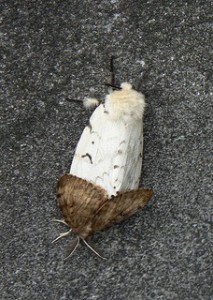Invasive Insect Species (part 1)
By Chris Williams on February 12, 2013.
 What exactly is meant by the term invasive? Here is a good definition and could be applied to any non-native (plant or animal) species. “Invasive species” means an alien species whose introduction does or is likely to cause economic or environmental harm or harm to human health. Problems arising from the accidental or intentional introduction of non-native species to the US are by no means a new phenomenon; it’s been happening since the founding of the country. Though many important invasive pest species are insects, (there are also many non-native species of fish and birds in this mix) by far the worst offenders (at least in terms of numbers) are non-native plants. The following links offer some good historical background on the general consequences of non-native pest species and the increasing threat of non-native plants.
What exactly is meant by the term invasive? Here is a good definition and could be applied to any non-native (plant or animal) species. “Invasive species” means an alien species whose introduction does or is likely to cause economic or environmental harm or harm to human health. Problems arising from the accidental or intentional introduction of non-native species to the US are by no means a new phenomenon; it’s been happening since the founding of the country. Though many important invasive pest species are insects, (there are also many non-native species of fish and birds in this mix) by far the worst offenders (at least in terms of numbers) are non-native plants. The following links offer some good historical background on the general consequences of non-native pest species and the increasing threat of non-native plants.
- http://alic.arid.arizona.edu/invasive/sub5/p5.shtml
- http://www.invasivespeciesinfo.gov/unitedstates/nh.shtml
Since I am an entomologist and not a botanist, I’ll focus the rest my attention on a few invasive insect species, historical ones, and those from the present. Some of you may argue that ALL insects are invasive (especially if they’re in your home uninvited!), but I’m referring to non-native species (exotic) that have found their way to the United States that have had a hugely negative economic impact. Without a doubt, probably the most infamous non-native insect pest ever is the European Gypsy moth. Gypsy moths’ arrival in the US (right here in Medford MA) occurred over 140 years ago as the result of an amateur entomologist/entrepreneur’s efforts to get involved in silk business and his ill-fated attempt to improve native silkworm caterpillar’s resistance to disease. The gypsy moth caterpillars accidently escaped and in less than twenty years had already begun to have a major impact defoliating trees in both Medford and surrounding communities. The following link has an excellent timeline cataloging the Gypsy Moths’ rampage through the US. Though there has not been a significant outbreak here in New England for about thirty years, it is still a very serious forestry pest today in many parts of the country.
In the second part of this article, I’ll take a look at some other invasive insect species both from past and present day and economic impact to property owners and to producers of agricultural/forestry commodities.